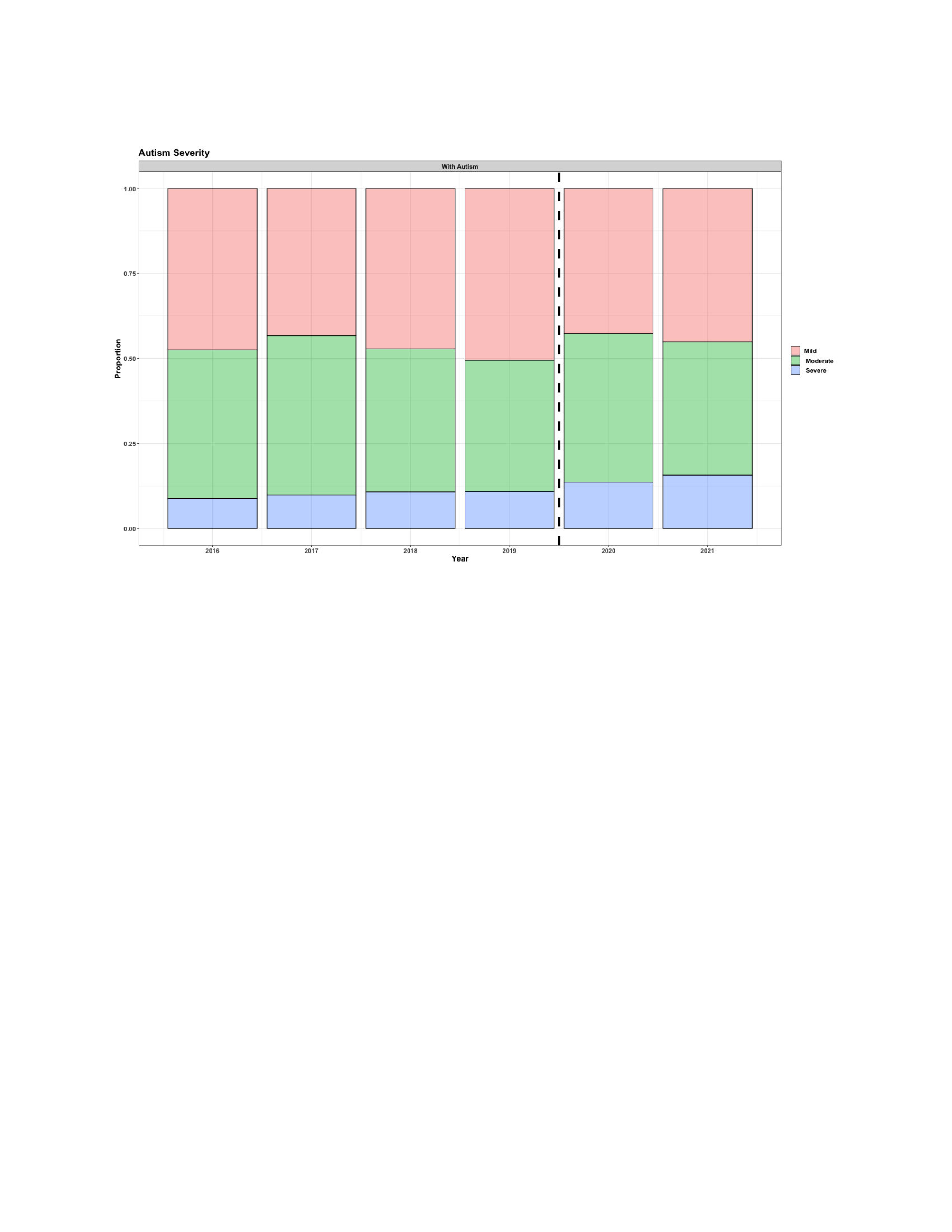Public Health & Prevention 1
Session: Public Health & Prevention 1
364 - Impact of the Covid-19 Pandemic on the Prevalence and Severity of Autism in the United States.
Sunday, April 27, 2025
8:30am - 10:45am HST
Publication Number: 364.5112
Emmanuel M. Mosuka, Brookdale University Hospital and Medical Center, Brooklyn, NY, United States; Abhivav Thakral, Brookdale University Hospital and Medical center, brooklyn, NY, United States; Fernanda Kupferman, One Brooklyn Health at Brookdale Hospital, Brooklyn, NY, United States
- EM
Emmanuel M. Mosuka (he/him/his)
PGY-3 Pediatric Resident
Brookdale University Hospital and Medical Center
Brooklyn, New York, United States
Presenting Author(s)
Background: Children with autism face several barriers to accessing healthcare. The pandemic exacerbated these issues by disrupting daily life, affecting healthcare, education, and social interactions.
Objective: The primary goal of this study was to investigate the impact of the COVID-19 pandemic on the prevalence and severity of autism on a national scale. Second, what factors, if any, contributed to the differences in prevalence and severity during the pandemic?
Design/Methods: Dataset: NSCH datasets 2016 to 2021.
Population: Children age from zero to seventeen years. The survey included a stratified random sample of the 50 states and the District of Columbia. The outcome variables included autism prevalence and severity, as well as healthcare utilization. The independent variables were the covid time period and autism. We used a difference-in-difference analysis to compare the initial pandemic period (2020-2021) with the pre-pandemic period (2016-2019). The analyses were adjusted for age, sex, socioeconomic status, and race/ethnicity. We calculated the prevalence ratios by exponentiating the regression estimates.
Results: The prevalence of autism was the same before (2.64%) and during (2.8%) the COVID-19 pandemic. However, there was an increase in the proportion of caregivers reporting severe autism during the pandemic, with a prevalence ratio of 1.532 (1.112, 2.111) when comparing before and during the pandemic, and a P value of 0.009, after adjusting for race/ethnicity, age, sex, and socioeconomic status. Further, there was a decrease in access to mental health services for those with autism during the pandemic. The prevalence ratio for not receiving mental health services during the pandemic compared to before was 3.828 (1.465, 9.998), with a P value of 0.006. However, this difference was not significant between individuals with autism and those without [P value = 0.17].
Conclusion(s): Our study suggests that while the overall prevalence of autism remained relatively stable during the pandemic compared to the pre-pandemic years there was a significant rise in the proportion of severe autism cases reported by caregivers. Additionally, the decline in access to mental health services for individuals with autism during the pandemic highlights the urgent need for targeted interventions and policies to ensure equitable access to health resources, particularly in times of crisis. As we continue to face the challenges of the pandemic, it is essential to prioritize the needs of individuals with autism and their families.
Autism severity
 Proportion for each category of caregiver-rated severity of autism as a percentage of all those with autism before and during the pandemic.
Proportion for each category of caregiver-rated severity of autism as a percentage of all those with autism before and during the pandemic. Healthcare seervice Utilization
 The results from the difference-in-difference analysis for each healthcare utilization parameter. The first set of columns for each parameter shows the pre-pandemic differences in the healthcare utilization parameters for those with and without autism. The second set of columns shows the prevalence ratio for that parameter during the pandemic versus before the pandemic for those with autism. The third set of columns is the ratio of the impact of the pandemic on the prevalence ratio of parameter for those with autism versus those without autism.
The results from the difference-in-difference analysis for each healthcare utilization parameter. The first set of columns for each parameter shows the pre-pandemic differences in the healthcare utilization parameters for those with and without autism. The second set of columns shows the prevalence ratio for that parameter during the pandemic versus before the pandemic for those with autism. The third set of columns is the ratio of the impact of the pandemic on the prevalence ratio of parameter for those with autism versus those without autism. Autism severity
 Proportion for each category of caregiver-rated severity of autism as a percentage of all those with autism before and during the pandemic.
Proportion for each category of caregiver-rated severity of autism as a percentage of all those with autism before and during the pandemic. Healthcare seervice Utilization
 The results from the difference-in-difference analysis for each healthcare utilization parameter. The first set of columns for each parameter shows the pre-pandemic differences in the healthcare utilization parameters for those with and without autism. The second set of columns shows the prevalence ratio for that parameter during the pandemic versus before the pandemic for those with autism. The third set of columns is the ratio of the impact of the pandemic on the prevalence ratio of parameter for those with autism versus those without autism.
The results from the difference-in-difference analysis for each healthcare utilization parameter. The first set of columns for each parameter shows the pre-pandemic differences in the healthcare utilization parameters for those with and without autism. The second set of columns shows the prevalence ratio for that parameter during the pandemic versus before the pandemic for those with autism. The third set of columns is the ratio of the impact of the pandemic on the prevalence ratio of parameter for those with autism versus those without autism. 
